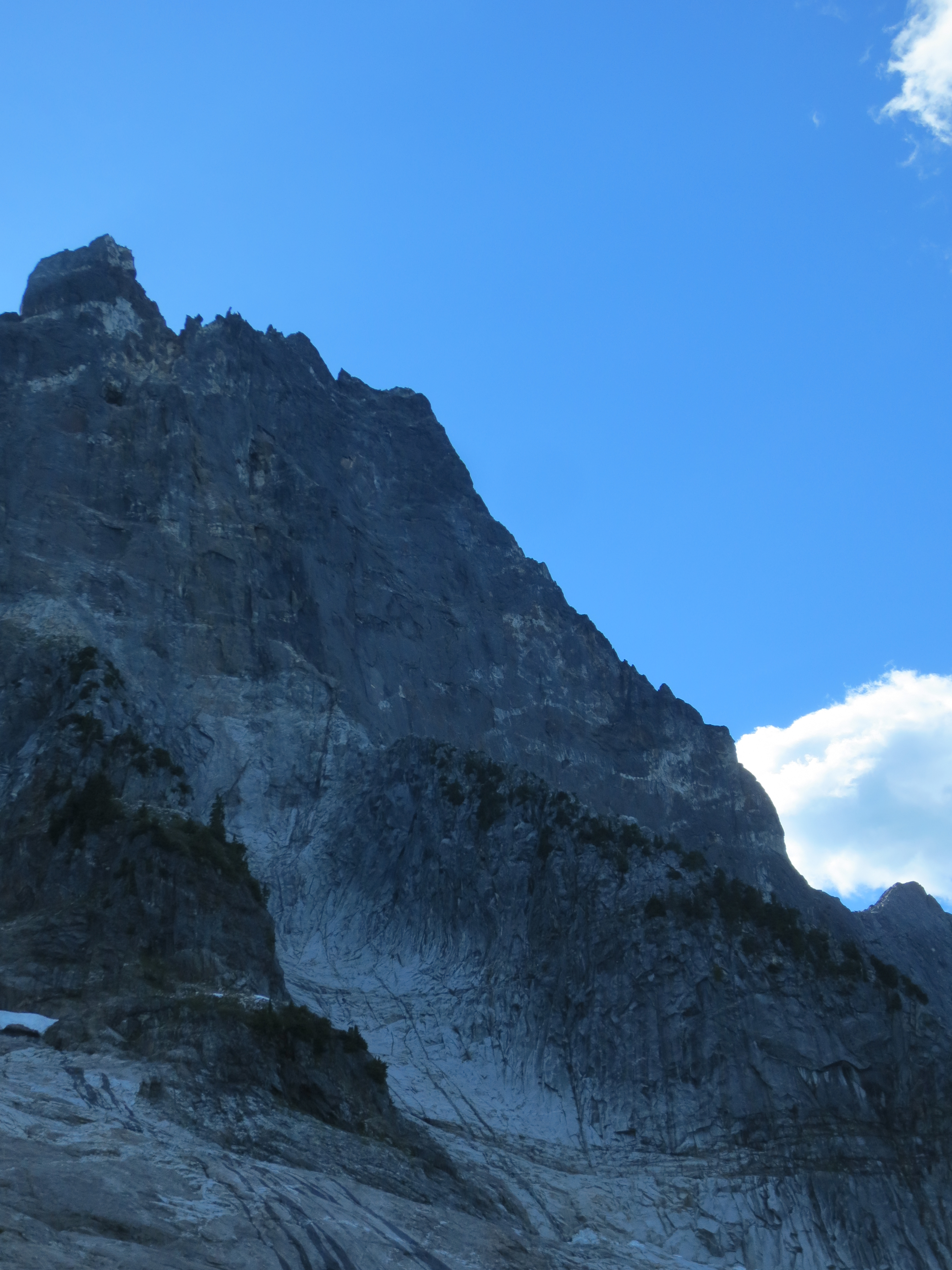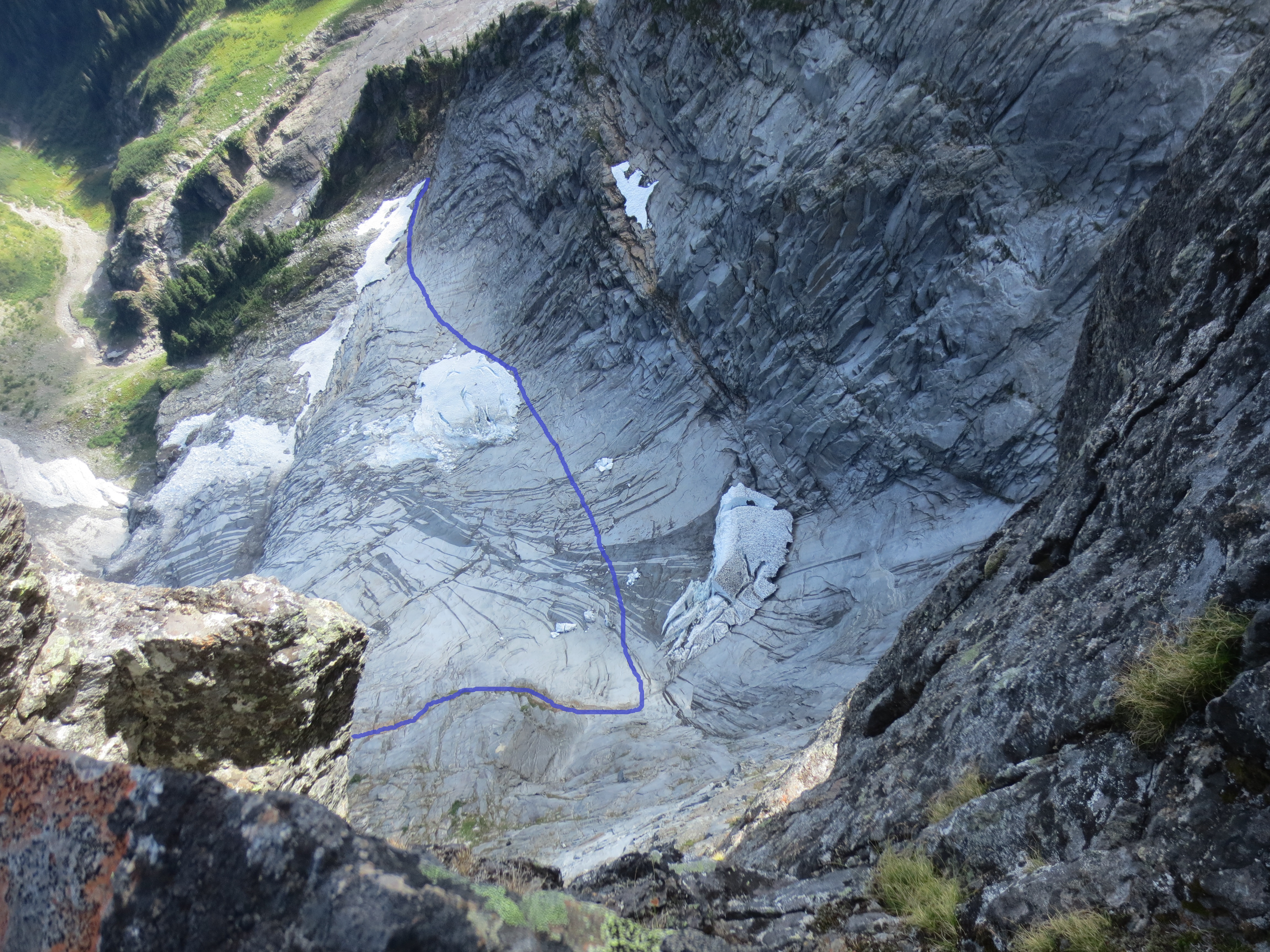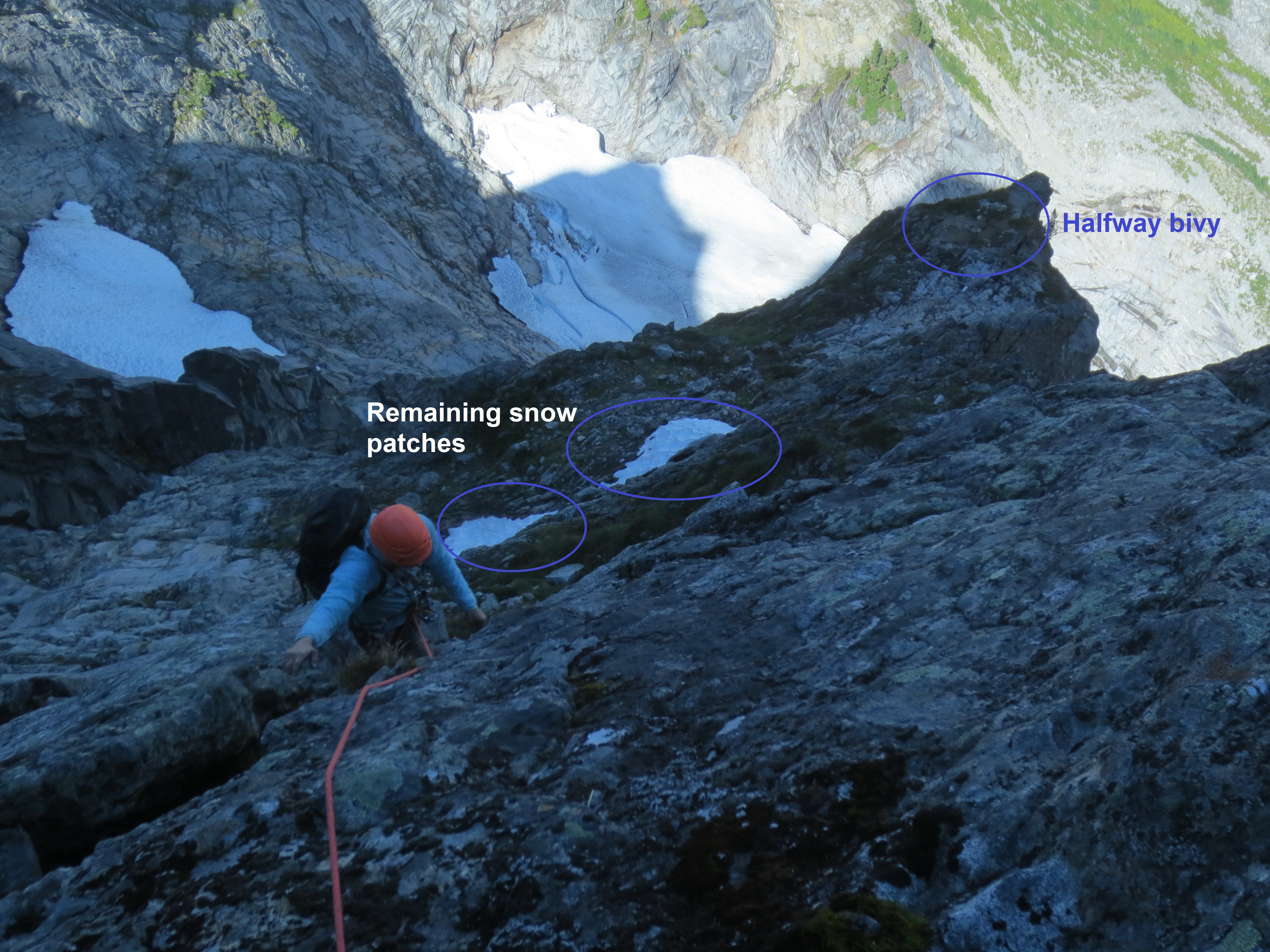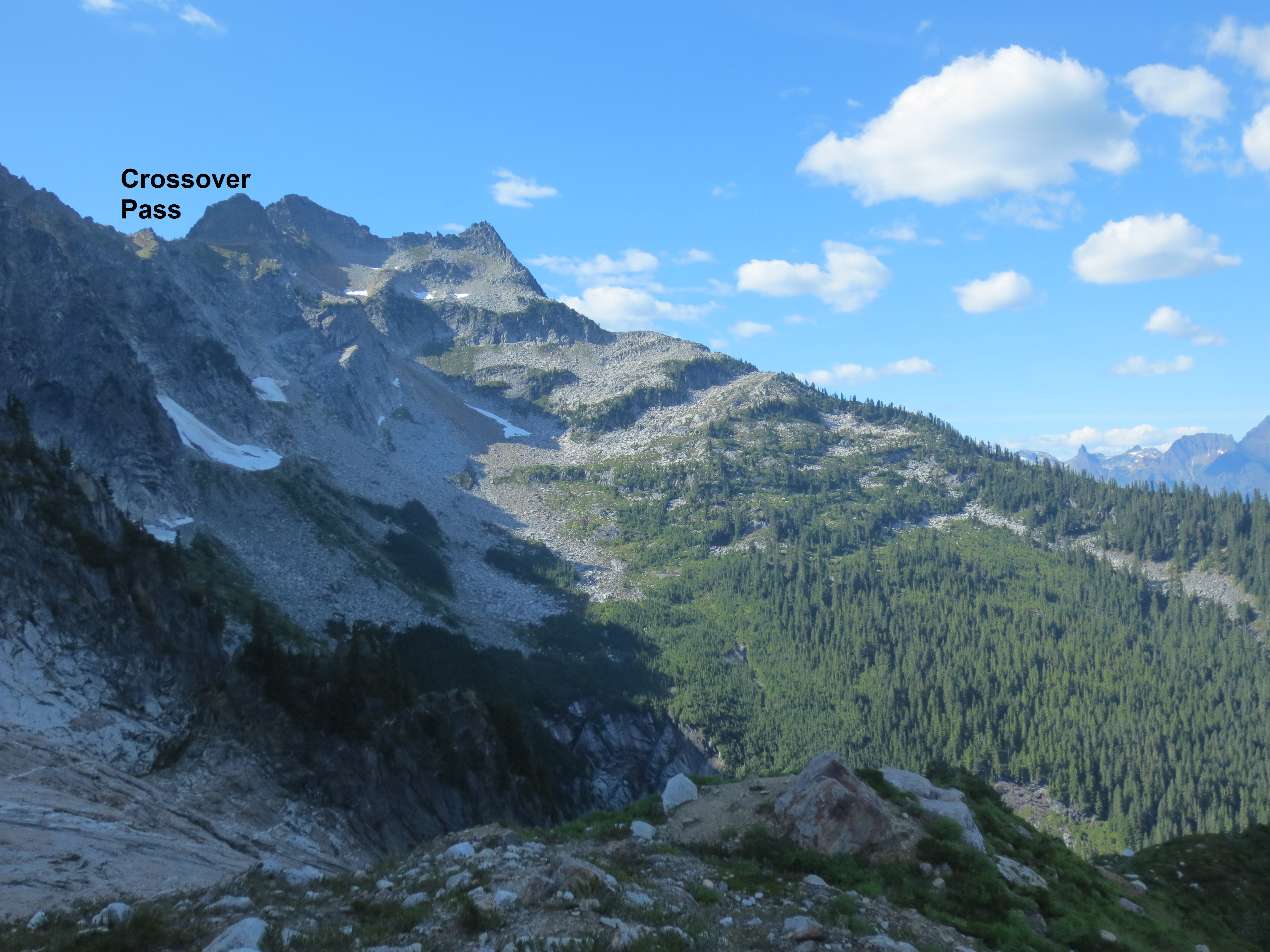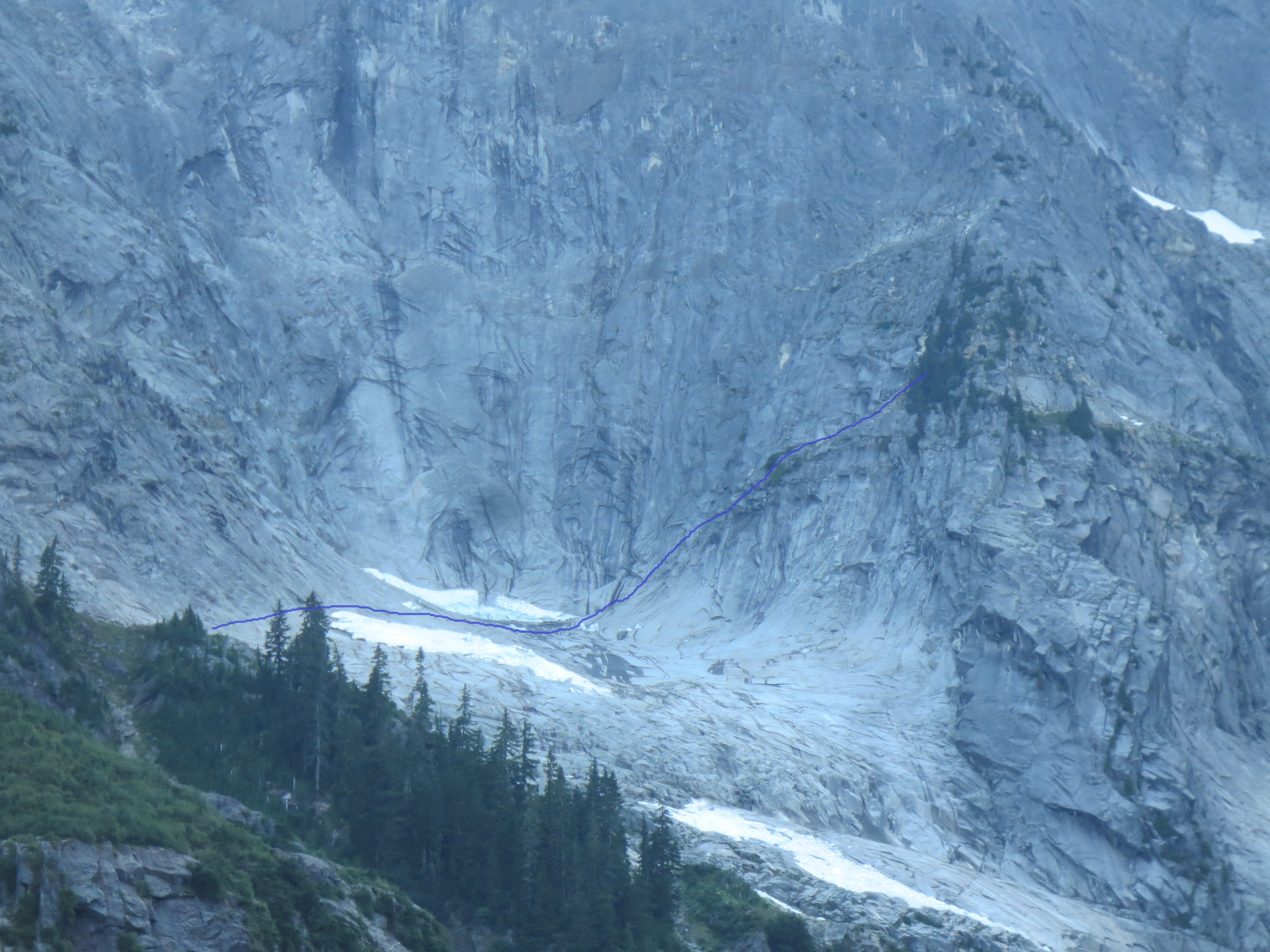Had the pleasure of guiding the NE Buttress of Mt Slesse on August 23 with a strong guest.
We bivied at the Propeller Cairn, then climbed the NE Buttress, descended the West side to a stashed car in Slesse Creek and had a good long sleep. We then hiked up and retrieved our bivy gear and finished with a swim in Chilliwack Lake!
The Slesse Glacier is virtually gone and poses little hazard. The Bypass Glacier has mostly gone and we crossed below the remaining ice on easy rock slabs with an exposure time of 3 minutes. This seemed reasonable until we got higher on the ridge and saw how large the remaining glacier pocket really was. It is still a significant hazard to consider and a few small pieces slid down during the day.
A trickle of water is still available on the trail 5min before the Memorial site, and there are good creeks at the Wooded Knoll and Propeller Cairn. There is a snow patch about 60m above the main bivy ledge that should last a couple weeks, and some snow in the scree basin below the SW Buttress.
The route is dry and in good shape. Approach shoes and rocks shoes are all that is needed. A single 60m rope is adequate for all the rappels on the SW Buttress if intermediate stations are used and all the anchors were in decent condition.
Nesakwatch road is fine in a 2 wheel drive with good clearance. Slesse Creek road was fine in a Toyota Matrix to the new parking area below a washout at about 6km.
The steep descent down the West side is unrelenting but straightforward and easily done in the dark. If you are considering the Crossover descent see the link below...
http://www.ubc-voc.com/mediawiki/images/7/7e/Crossover_Pass_Descent.pdf
A fun adventure all around and a beautiful place to climb!

